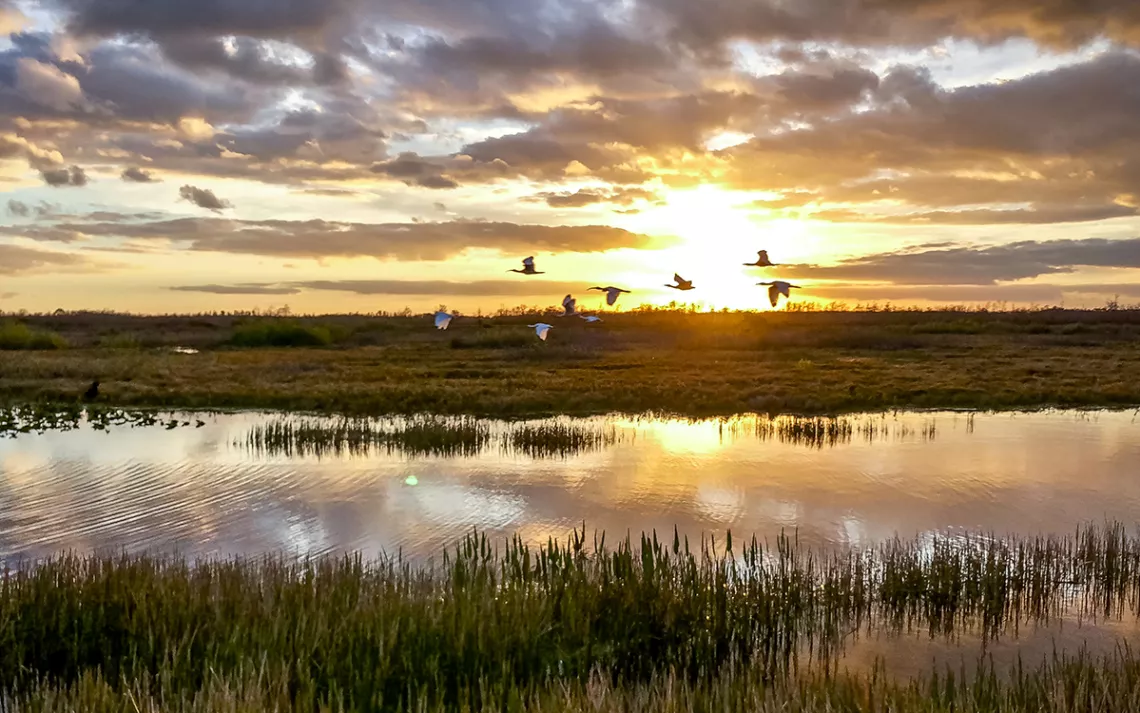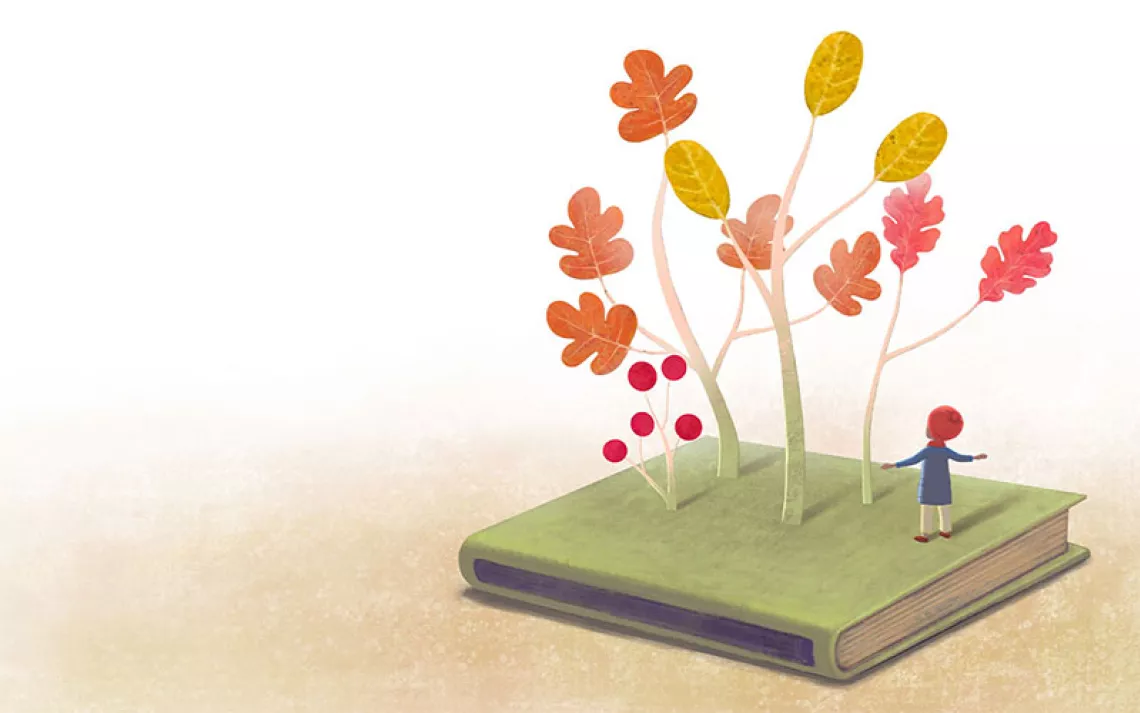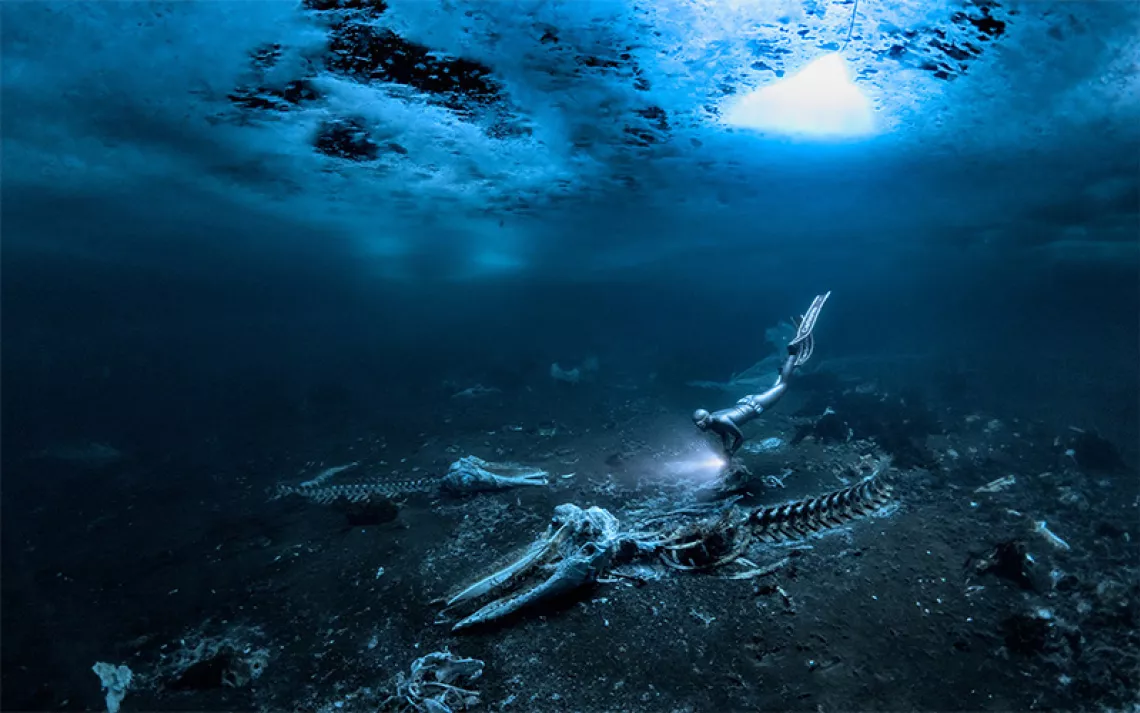A Conservation Glossary for Budding Environmental Activists
Here’s a rundown of some of the most commonly used terms in wildlife conservation

Flock of birds flying over a Louisiana wetland at sunset. | Photo byJaimie Tuchman/iStock
If you’ve ever had trouble wrapping your head around the concept of biodiversity, you’re not alone. Google Trends reports that searches for "what is biodiversity" have doubled in the past five years. And a Google search for "conservation" generates over a billion results. As the public spotlight belatedly turns to the decline of nature, many are trying to understand the lexicon used to explain the causes and solutions for the precipitous fall.
Biodiversity loss, conservation versus preservation, and deforestation have become so ubiquitous that their use borders on trendy. Scientists drop them in reports, journalists sprinkle them in news articles, and they may even pop up in your Instagram feed. But their wide application can often muddle meaning through the sheer number of ways in which they're expressed. Is rewilding letting nature take its course? Or is it heavy-handed management that strives for a precolonial baseline?
As scientists get a clearer picture of how and why species are dying, deciphering what it all means will increasingly feel like a game of Dictionary. Fear not! We here at Sierra will help break down some of the most common conservation terms and unpack what they mean. Here's a rundown of some of the words you'll probably need to know as you get up to speed on the state of nature.
Biodiversity: While scientists have used the word biodiversity since at least the mid-1980s, the term has yet to connect with the general public in the way that other terms, such as climate change, have. That's partly due to its broad meaning, which encompasses several different concepts. In one study, people’s perceptions about biodiversity varied widely; one respondent said it’s the number of species in an environment, while another thought it's “a fancy name for nature.” In reality, both of these things are true and so much more. According to the late biologist E. O. Wilson, biodiversity is “all living things on the planet.” This includes the variability of genetics within species, species within environments, and environments within regions. More recently, the word has gained notoriety for the rapid rate at which biodiversity, a key indicator of life on Earth, is declining due to the destruction of nature for human use.

Sign up to receive Sierra News & Views
Get articles like this one sent directly to your inbox weekly.
With this action you affirm you want to receive Sierra Club communications and may vote on policy designated by the Sierra Club Board.
Conservation: At its root, this is about protecting wild nature. In the United States, early versions of this manifested in the creation of laws to protect natural resources, such as timber, and the beginning of national parks, mostly for recreation. In the following decades, environmental champions sought not just to conserve resources for utilization but to preserve their natural beauty and ecological functions. Preservation differed from conservation in that it was meant to protect wild nature from being used by civilization, whereas conservation focused on sustainable utilization. Today, the word conservation has evolved to encompass the protection, restoration, and preservation of environments, like forests and grasslands, and wildlife writ large. Sometimes, human benefits (like clean air, water, and soil) are prioritized. At its heart, the conservation philosophy is about ensuring that the natural world remains intact for its intrinsic value and is here for future generations.
Habitat: In simple terms, this is where species live. Habitat means home for wildlife. These areas typically include all the features an animal or plant would need to thrive, such as ideal living conditions, access to water and nutrients, sufficient space, and proximity to potential mates. Unfortunately, habitat loss is currently the number one driver of extinctions. Some reports have found that the United States loses about a football field's worth of wildlife habitat every minute. President Biden’s America the Beautiful initiative is meant to alleviate some of the pressure by establishing partnerships between federal, state, private, and tribal representatives to protect areas that wildlife depend on. If conservation is to succeed, this all-hands-on-deck method will be crucial to saving what little habitat remains.
Ecosystem: Unlike habitats, which are the lived environments of individual animals or species, ecosystems are the collective community of organisms that make up an area, usually defined by physical or environmental constraints. Not only are the plants, animals, and land a part of an ecosystem, but the weather, seasons, and wildlife behavior also fit within an ecosystem. Some ecosystems, like the temperate rainforest along the southeast coast of Alaska and coastal British Columbia, play an outside role in storing carbon. Others, such as the deciduous forest of southern Appalachia, are key to protecting endangered species and exemplify a specific forest type. Ecosystems aren't just vast terrestrial areas: They are waterways, reefs, caves, glaciers, and even your backyard.
Rewilding: The basic tenet here is that evolution knows best and that leaving an area to function independently is the best way to restore it. However, for rewilding to succeed, human involvement is sometimes needed. For example, with large-scale landscape rewilding, as championed by groups like the Rewilding Institute, human intervention may be needed to return species that have been expatriated. The successful introduction of wolves to Yellowstone is one of the most notable examples. Wolves are keystone species, helping to regulate deer and elk populations so that they don't over-browse, which can threaten ecosystems and the species that rely on them. Some reports suggest that predators can even slow the transmission of disease. The underlying belief is that if an ecosystem is to function properly, all of its components need to be intact.
Connectivity: One crucial part of rewilding is connectivity—that is, connecting fragmented protected areas that are no longer sufficient for safeguarding species in the age of climate change. Scientists predict that as the climate continues to warm, species will need to move up in elevation or closer to the poles to adapt. The best way to ensure they can do that is by preserving core areas where wildlife exists and saving the natural routes they use to migrate and travel, also called wildlife corridors. These are frequently the thin green slivers connecting large protected areas or the woodlots between farms. In today's over-developed world, human ingenuity can help boost connectivity. Wildlife crossings like bridges, underpasses, and culverts are needed now, more than ever, to help animals move across the human-built world.
Public Lands: Since at least the time of the Roman Empire, natural resources have been protected by governments for the benefit of the public. In the United States, the Departments of Interior and Agriculture manage roughly 640 million acres of public land, nearly 30 percent of the country's surface, for the public. These lands include national parks, wildlife refuges, monuments, conservation areas, national forests, waterways, and even shorelines. Given the amount of public land in the US, these areas are crucial conservation tools in the face of dwindling wildlife habitat. However, only about 12 percent is truly useful for conservation purposes. That is, protected against things like logging; oil and gas extraction, which emits carbon and destroys habitat; mining; grazing, which damages riparian areas; and over-exploitation, which is responsible for the deaths of millions of animals each year.
Indigenous Knowledge: Indigenous communities have managed wildlife and natural resources for thousands of years. Their long-standing presence on the landscape has allowed them to amass a wealth of information about the behavior, relationships, and needs of the local fauna and flora. Better yet, this ecological knowledge is often highly localized and in tune with the surrounding area. While Indigenous people make up roughly 5 percent of the global human population, several reports have found lands that overlap with their traditional homelands hold 80 percent of all remaining biodiversity. This fact underscores the key role that Indigenous communities play in maintaining biodiversity and healthy ecosystems. More often than not, they are a part of that ecosystem and recognize their place among its many parts. With that connectedness comes a realization that wildlife should not be over-exploited and persecuted. Many animals on the landscape are considered brothers, sisters, and spiritual beings.
 The Magazine of The Sierra Club
The Magazine of The Sierra Club



